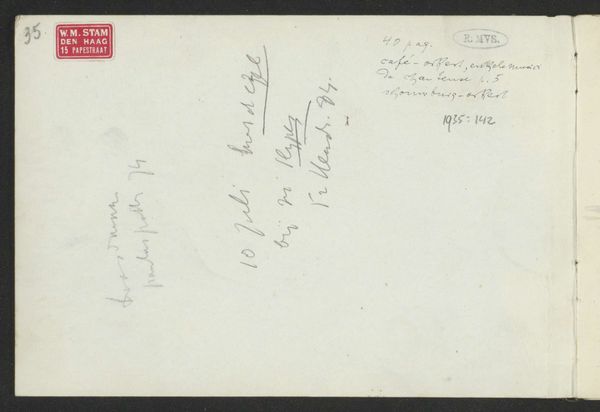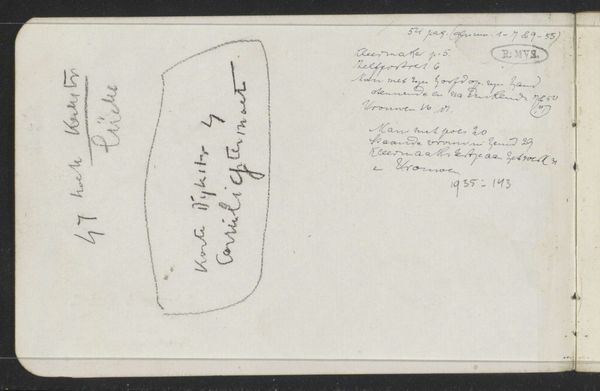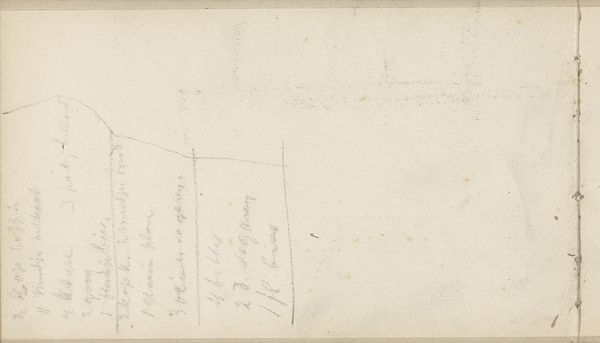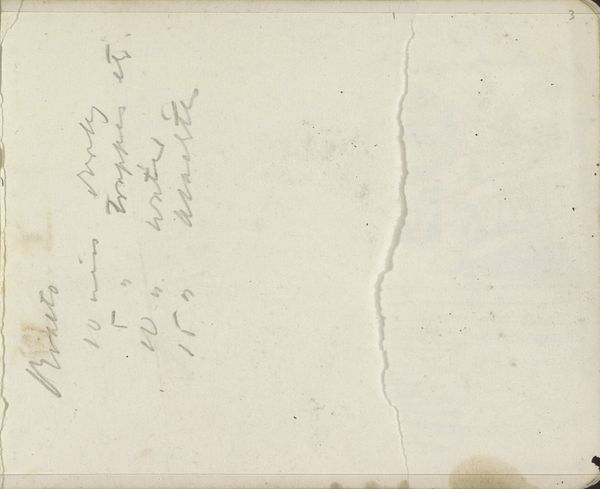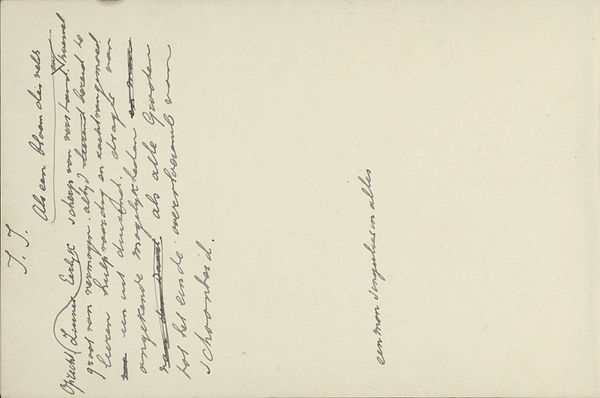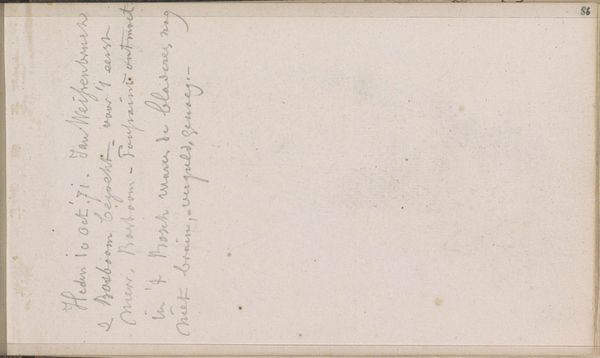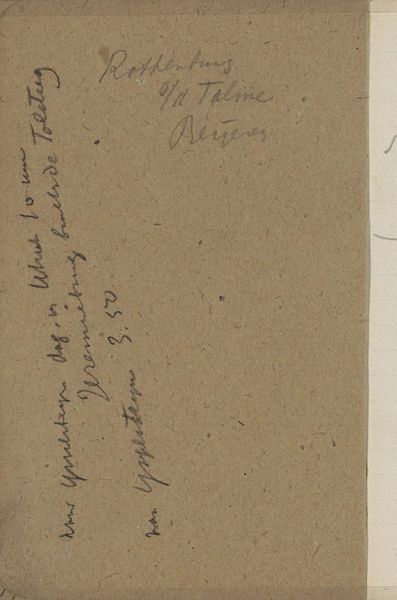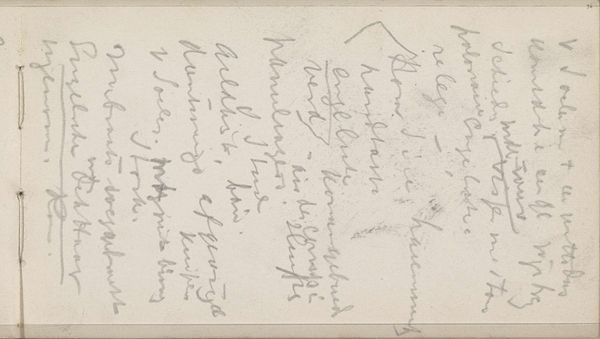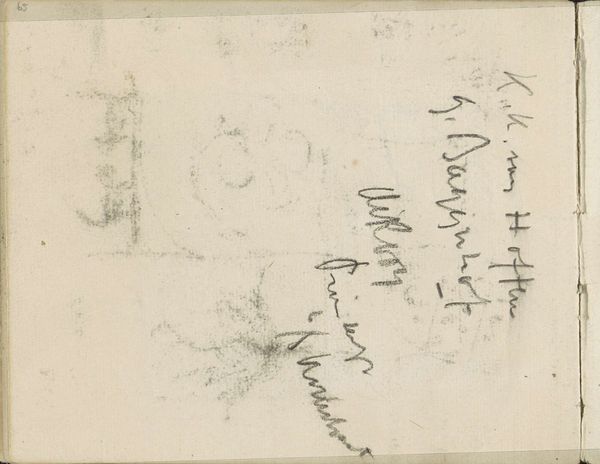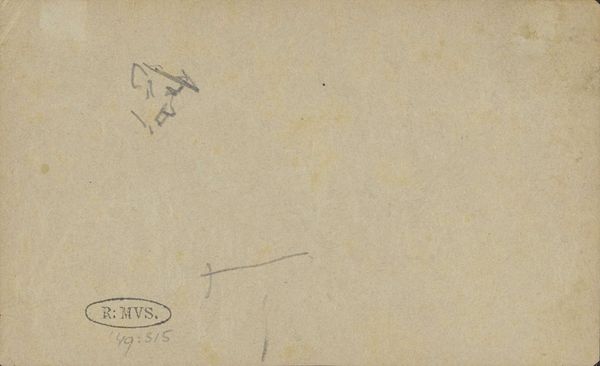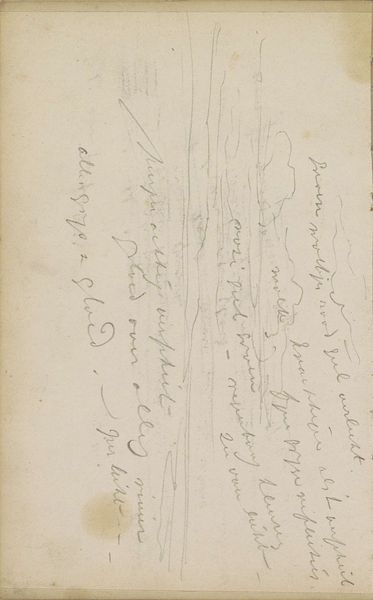
drawing, paper, ink
#
drawing
#
aged paper
#
hand written
#
hand-lettering
#
impressionism
#
sketch book
#
hand drawn type
#
hand lettering
#
paper
#
personal sketchbook
#
ink
#
fading type
#
sketchbook drawing
#
sketchbook art
Copyright: Rijks Museum: Open Domain
Editor: This is "Annotaties," a drawing in ink on paper, by George Hendrik Breitner, made around 1886 to 1890. The aging of the paper and fading of the ink give the piece a fragile, ephemeral quality. What do you see when you look at it? Curator: The focus here is undeniably on the materiality of the work itself. The aged paper and faded ink are not just aesthetic qualities but reveal the passage of time and the decay inherent in material existence. It also speaks to the labour involved – the act of writing, of inscription, almost lost to time. We’re left with traces. Are these annotations a commodity? Is this art, or simply ephemera? Editor: So the artistic value comes not from a depicted subject, but rather the tangible elements and the creation itself? Curator: Precisely. The hand lettering becomes a critical focal point. Consider the means of production. It challenges our traditional ideas of "high art." What does Breitner, in using humble materials like paper and ink, tell us about the accessibility or the perceived value of artistic expression? And who was this made for? Editor: That's an interesting way to put it – making us question what defines art itself based on how it’s made. Curator: The means by which art is made, and how these relate to society’s power structures are paramount. Think of it this way, what labor and social context created this object we consider worthy of display now? Editor: I guess it makes you realize art isn't just about pretty pictures; it's tied to real materials, processes, and ideas around value and labor. Thanks! Curator: Absolutely, it's in understanding those connections that we can truly appreciate the richness and complexity of art.
Comments
No comments
Be the first to comment and join the conversation on the ultimate creative platform.
